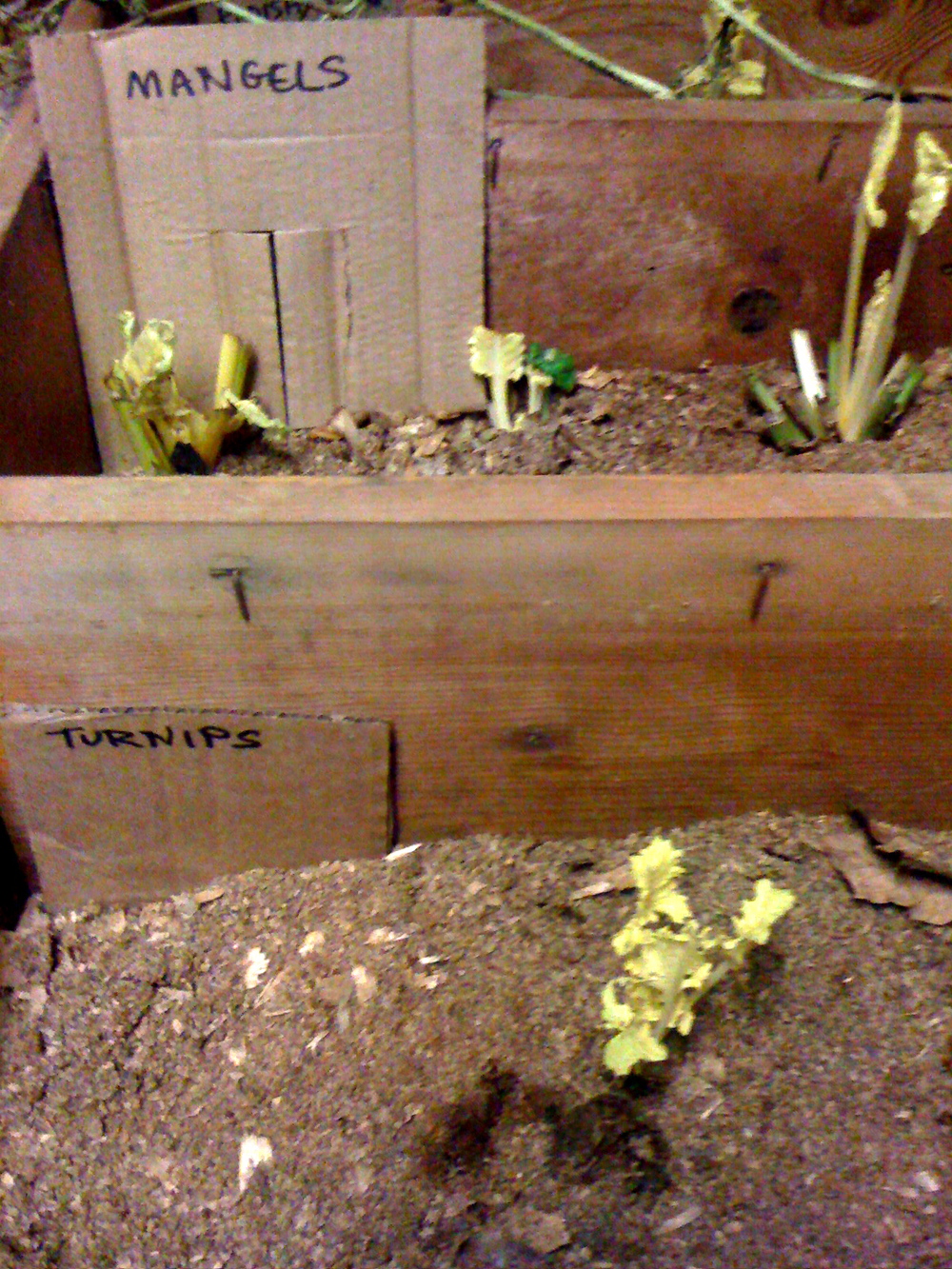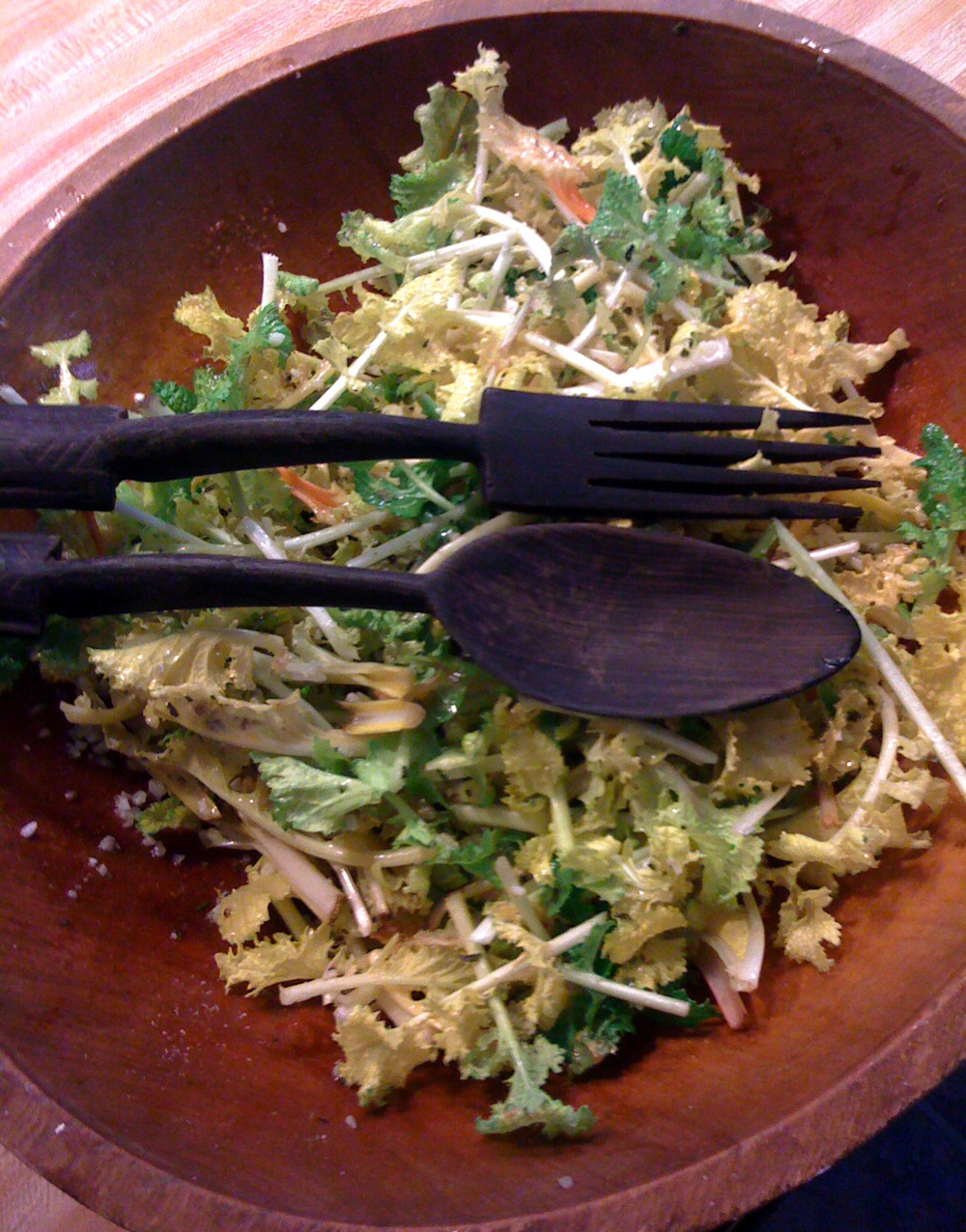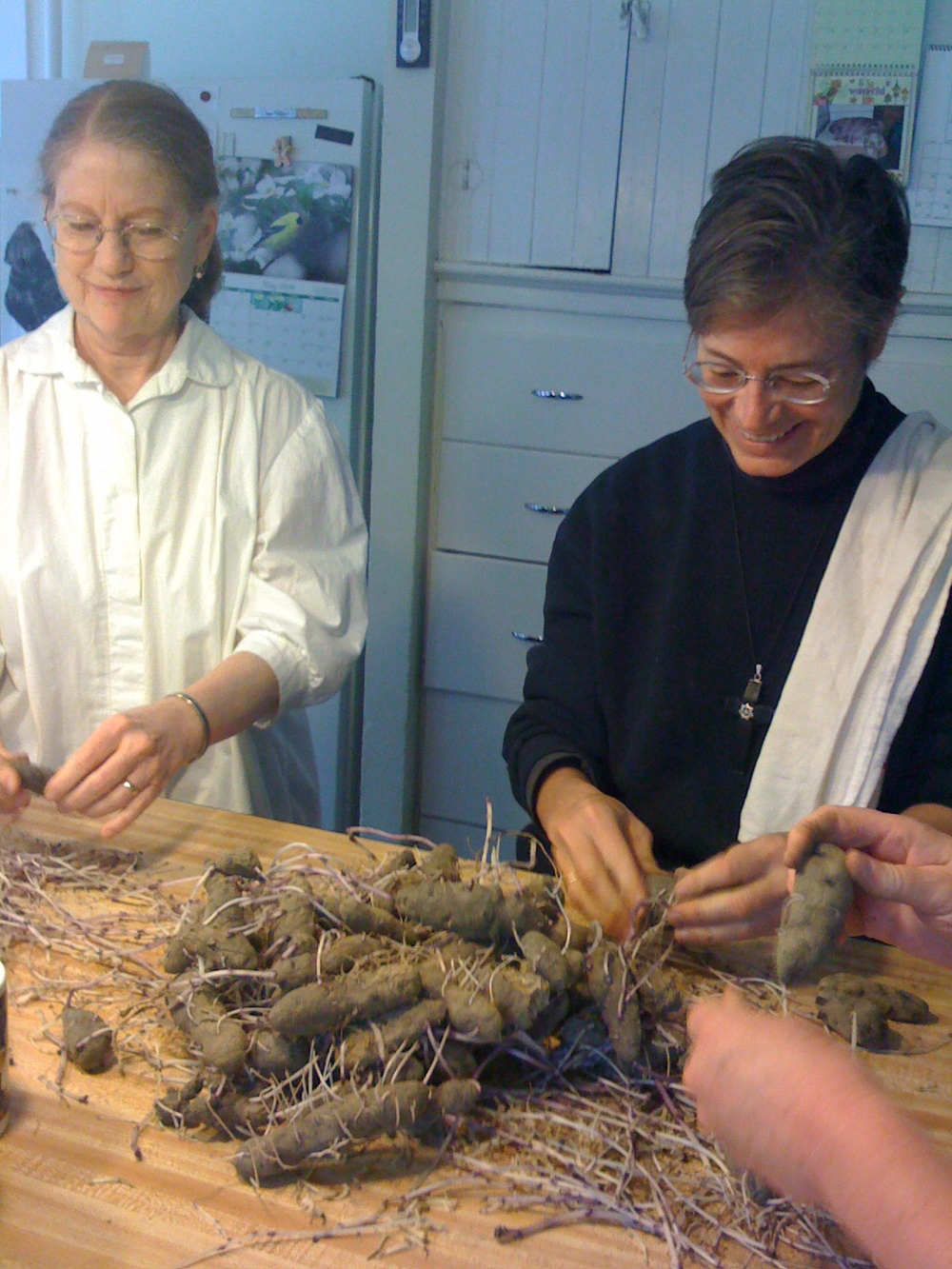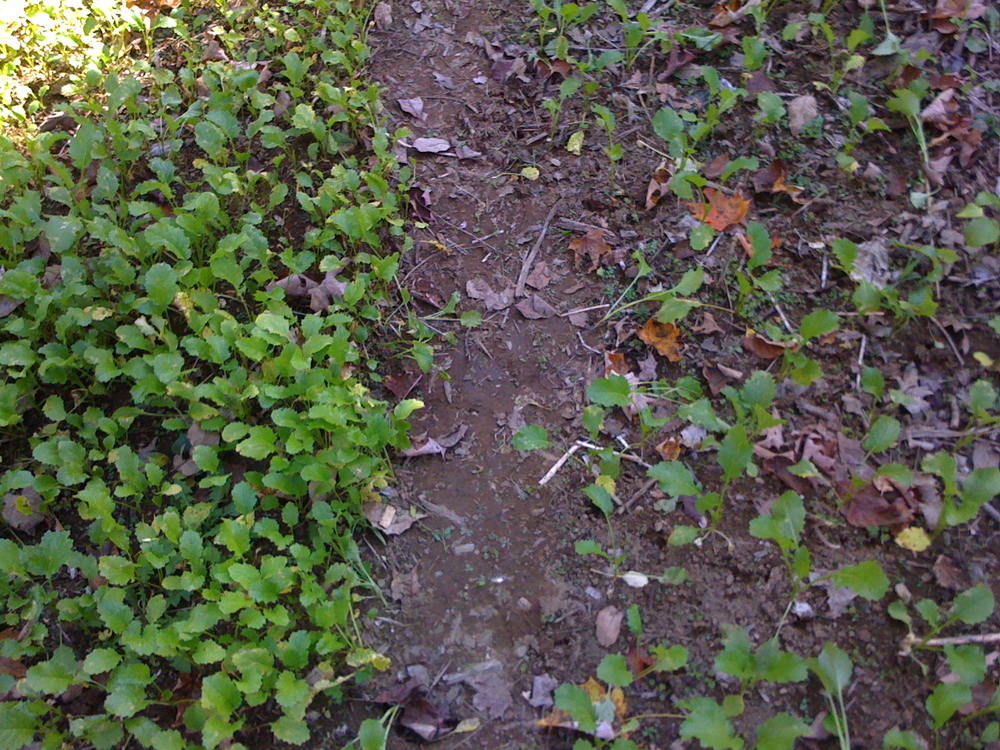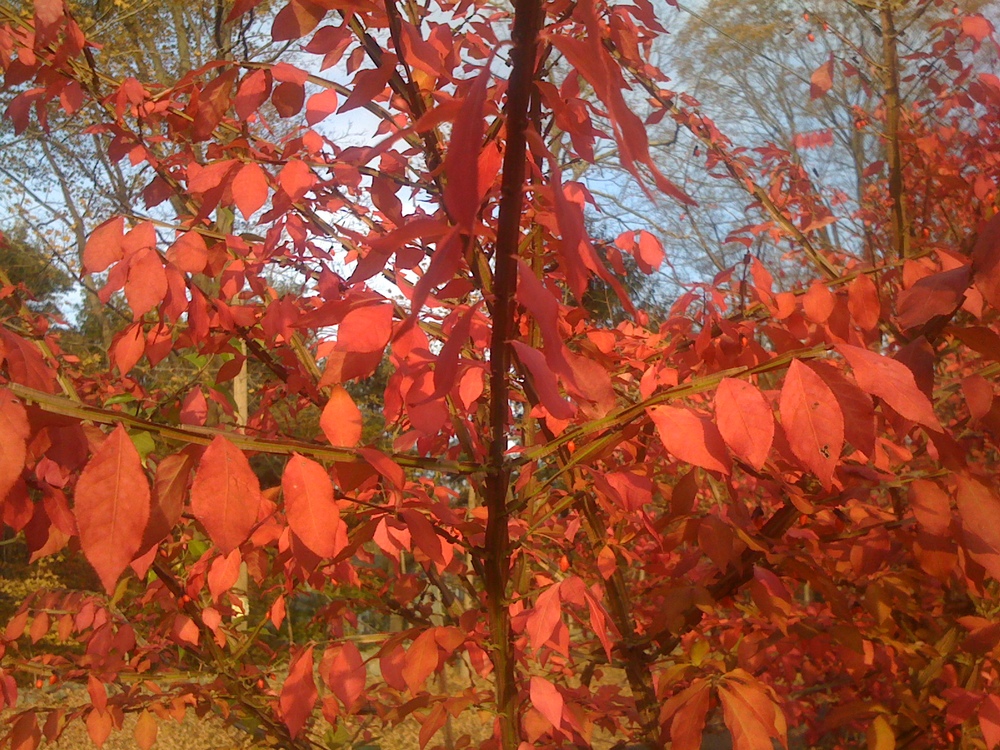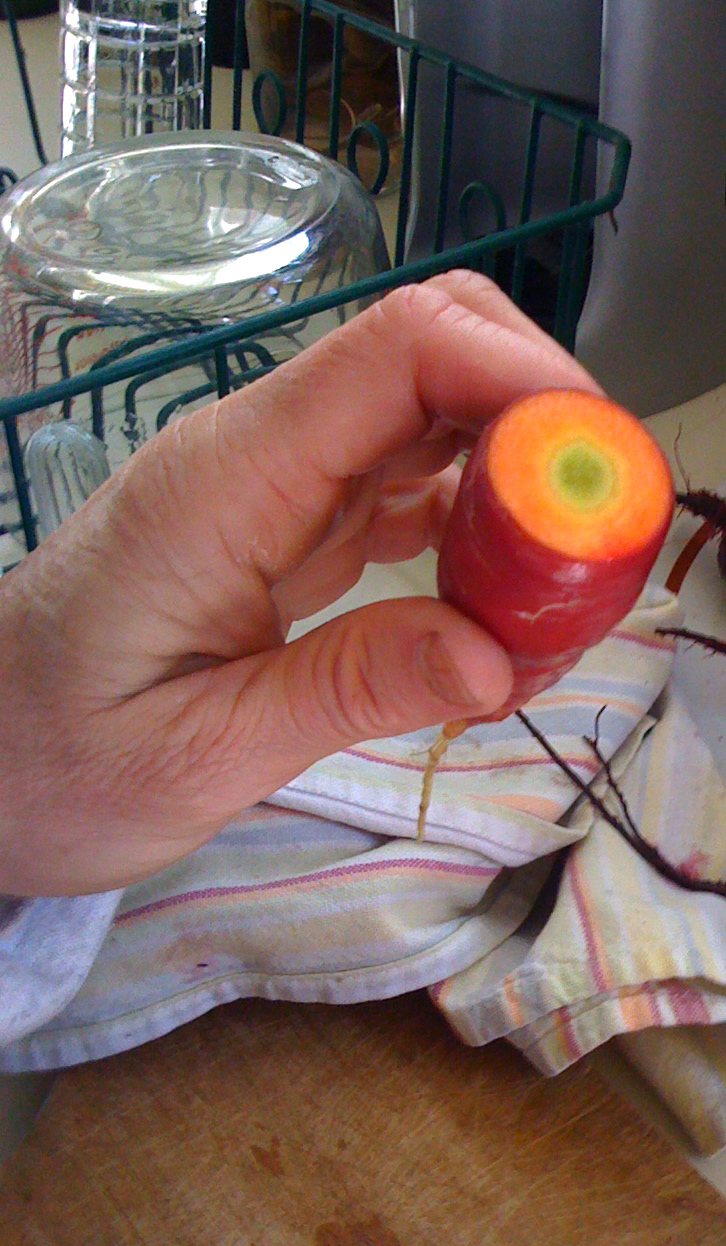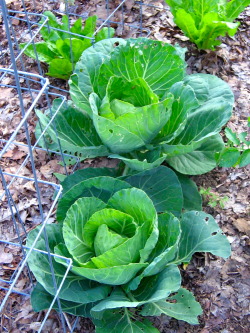 Two of the sisters and I recently attended the New York regional meeting of the New England Organic Farming Association (NOFA). It was inspirational, informative, and light-hearted. I hope my anthropology peeps won’t take offense at this, but NOFA conferences are infinitely friendlier and more encouraging than the academic conferences I’ve attended. People are there to share information, to try to help one another succeed, to relate stories of what works and what doesn’t work, to introduce new paradigms and scientific theories… You just don’t see any grandstanding from audience members, no one is trying to poke holes in the presenter’s talk, and there's no sycophant-ing around “big name” speakers.
Two of the sisters and I recently attended the New York regional meeting of the New England Organic Farming Association (NOFA). It was inspirational, informative, and light-hearted. I hope my anthropology peeps won’t take offense at this, but NOFA conferences are infinitely friendlier and more encouraging than the academic conferences I’ve attended. People are there to share information, to try to help one another succeed, to relate stories of what works and what doesn’t work, to introduce new paradigms and scientific theories… You just don’t see any grandstanding from audience members, no one is trying to poke holes in the presenter’s talk, and there's no sycophant-ing around “big name” speakers.
Instead, there’s energy, and excitement, and a lot of respect for folks who’ve gained experience—even if they’re relatively young. And there are a lot of young people there! Many, many young farmers, interns, and food activists were there, some with young families, making this event a truly multi-generational happening.
But beyond the distinctly optimistic and energetic mood of the conference, I was just struck, as I was at the big NOFA meeting this summer in Amherst, Massachusetts, at just how much there is to learn. Want to learn how to make great compost? Want to learn how to run an artisanal cheese business based on sheep flocks? Want to learn medicinal herbs and their properties? Integrated pest management? They had all that, and more.
Some of the panels and presentations I attended included:
- creative farm infrastructure (how to plan the various spaces of your farm)
- the health benefits of raw milk and the government’s (long-running!) campaign against it (see http://www.realmilk.com/)
- the no-till corn cultivation methods of the Iroquois in the 17th and 18th centuries, which far surpassed contemporaneous European yields of wheat
- culinary herbs
- handcrafting soap
and I took a full-day, hands-on workshop on cheesemaking, and came home with my own chunk of bleu cheese that now must ripen for 6 months!!
Perhaps more important than any specific piece of information, here’s what I took away: you can learn how to do most anything.
The young farmer who gave a talk on farm infrastructure had done a short apprenticeship with a carpenter, and then learned as he went, tearing down his old farm house, rebuilding it, building a new barn and a new vegetable washing and refrigeration building. He kept telling us that we could build too, that it isn’t that hard, and that one way to get started is by observing and assisting someone with experience. He also encouraged us to tell people our story, to relate our goals and vision to others; he had received tremendous help from other people who were inspired by him and who wanted to help him on his way.
“Take-away” number two: it is wise to reconsider things that we think we know. Farming, like all human activity, is cultural. There are things we take for granted, things we assume to be true because that’s the way folks have done it for a long time. But looking across cultures, across eras, we can see that there are many ways to approach the same problem—and there is much to learn from others. Whether or not to till is a debate in farming; proponents point to the fact that tilling breaks up the soil and makes it easier to plant, and opponents argue that breaking up the soil kills some of the valuable soil biology and breathes life into dormant weed seeds. Culturally, we associate farming with plows; the plow is an iconic artifact and most of us probably assume that plows are necessary.
But at the conference, I learned that the Iroquois, when encountered by European colonists in the 16th and 17th centuries, weren’t tilling their fields to grow corn. The colonists’ letters express amazement at the size and the plenitude of the crops. Instead of plowing, the Iroquois created mounds of dirt and planted the corn seeds in the mounds. A few times during the season, they’d come and clear away any weed growth on the mounds, and at the end of the season, they’d harvest the corn and leave the mound as it was until the next year. The stalk would decompose and the next year, all they’d have to do is clean up the mounds and plant new seeds.
The agronomist who gave the talk theorizes that the soil the Iroquois were working with had a nitrogen level of 4%, and that this high level of nitrogen contributed to the vitality of their corn crops. She tied this practice to the Iroquois’ no-till method, because tilling soil reduces the amount of nitrogen in the soil over time (which is why factory farming adds chemical fertilizers, too boost nitrogen and other levels). At Bluestone Farm, we’re going to experiment with creating some of these mounds this year, and see how it works; one difference is that now we have a whole different set of weeds than the Iroquois did, so the low-level weeding of the Iroquois may not turn out to be true for us.
Finally, I came away with deep respect for experimentation, and for the patience that it requires. Larry, the “soap guy” from Vermont Soap, gave a great presentation on soapmaking. If you’re looking for a brand of good, organic soap to use, I’d definitely encourage you to check out his products! At his presentation, I learned the basic chemistry of soap making, and how to think about the variables that might cause any particular soap recipe to go wrong. Rather than tips, he gave us tools for thinking about soap making, and I felt like I really learned something. Basically, soap is formed by a chemical reaction that takes place when you combine a fat (acidic) with an alkali (basic) and water. But beyond the information he imparted, I got a real sense of how much trial and error goes into his work.
And, actually, it’s like that with farming in general. Each year, you have to observe what is happening with each of the crops, their germination, their placement, the weather, the soil conditions, and then use all that information when planning for the next year. Try to do a little more of this, shift this crop’s location over there, start this one a little earlier, harvest that one even later. Add more minerals to the soil, introduce more fungi, bring in plants that attract beneficial insects. Use row covers, a hoophouse, a greenhouse. . . So many variables to account for, so many strategies to consider, so many experiments to try. And in the end, you do your best and leave it in the hands of God.
When I was working in education, I followed the work of James Gee, a great scholar and someone you should definitely check out if you are interested in what we know about learning . At one presentation, he talked about an experiment on motivation that had been done with chimps (I think) in which they were instructed to solve some puzzle, and after solving it, they were given a treat. The scientists hypothesized that when the treats were taken away, the chimps would lose interest and eventually refuse to solve the puzzle. But it turns out that the chimps kept on solving the puzzle with or without the treats—this is, Gee says, because they enjoy it! And we humans, just like our closest relatives, simply enjoy solving problems too. Gee’s point is about situational learning—that people can learn things in context that are difficult to grasp in the abstract, that giving a kid a real chemistry situation to solve is more compelling than memorizing abstract facts—but I think it extends to farming as well. Farming is like one big problem to solve, and there is great pleasure in just puzzling through it…like a giant crossword, with nearly unlimited variables.
So here I am, six months into this experience of being on the farm, and I’m energized and excited to tackle new things and to experiment, to observe closely, and problem-solve. Maybe that’s one of the larger lessons I’ve been learning here: to think of my entire life as an experiment, a chance to learn new things, to push my comfort zones, and to have fun.

